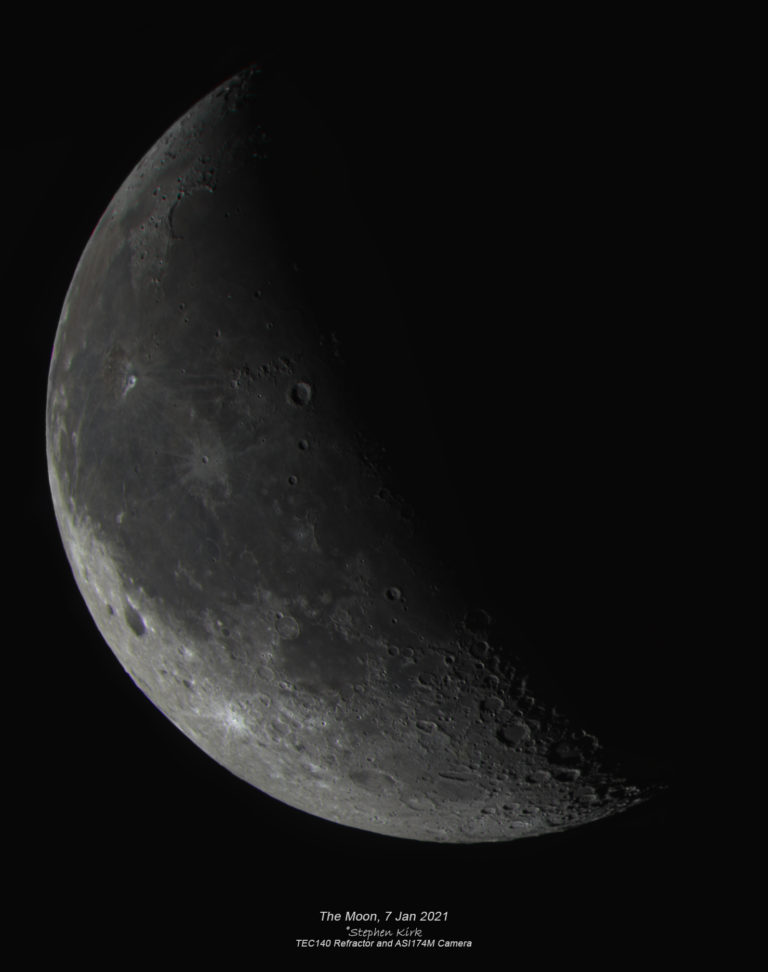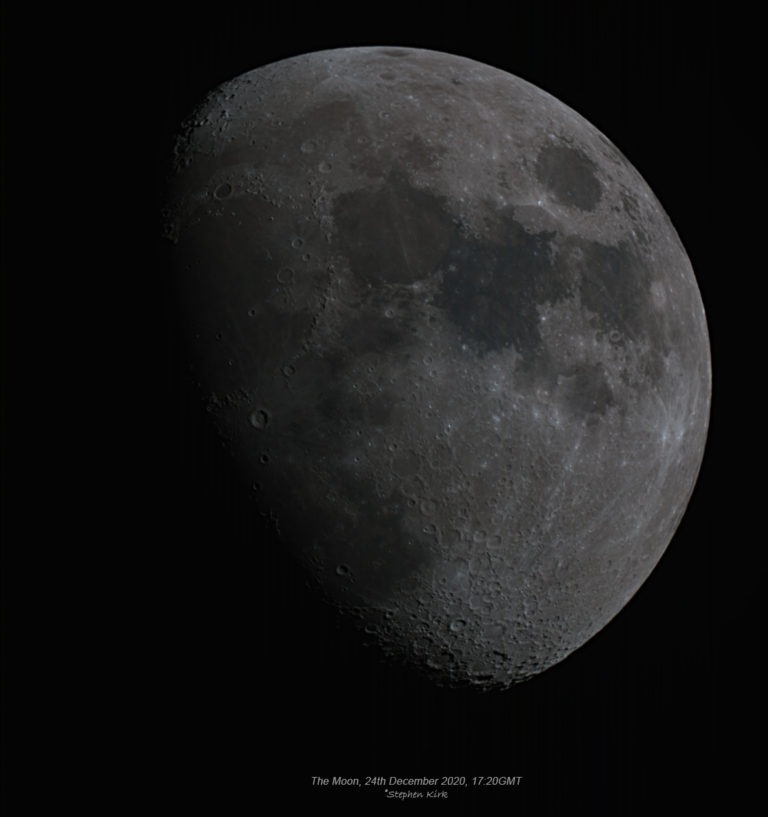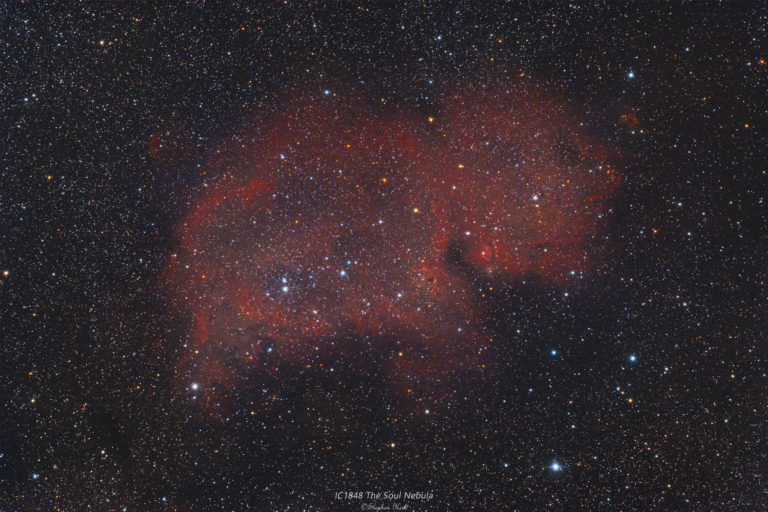I had to get up early in the morning to get this picture of The Moon. I set my alarm and got up at 05:00 which took considerable motivation, especially since it was -6C! I don’t capture many last quarter and later moon pictures because the Moon is only ever visible in that phase early in the morning and working full time it is not easy to be getting up very early when you have to do lots of driving. However, conditions for astronomy in the UK have been exceptionally poor for the last six months of 2020 and I am desperate to be able to image anything at all! The Moon, LRGB TEC140 Refractor Technical Details The Moon was in Scorpio, low down to The South from my location, and seeing was average with the Moon at such a low altitude Phase is 38% waning.Imaged from my back garden…
The Moon at a 99% waning phase 30 Dec 2020 between 21:30 and 22:20. Note the bluish and tan colours…
This is a one shot colour picture of The Moon through my Takahashi FSQ85 telescope and my QHY268C colour camera. Seeing between bouts of cloud dodging was quite good with very little in the way of shimmering. This is the best 40% of 5000 frames captured with Fire Capture. I did not use the full resolution of the QHY268’s 6000×4000 sensor, I just captured the central 1600×1200. Unusual to see the FSQ85 used as a planetary or lunar scope but it does excel at this as well as deep sky astrophotography work. It is also a very good instrument for visual observations.Processed with Autostakkert, PixInsight and Photoshop. I hope you like it. It could do with a bit more colour to bring out the colour in the Mare (sea) regions. The Moon 24 Dec 2020 with FSQ85 and QHY268C
The Soul Nebula – IC1848 The Soul Nebula is a large emission nebula in the constellation of Cassiopeia. It is commonly imaged with the nearby Heart Nebula as a nebula pair, not unsurprisingly called the Heart and Soul Nebulae such as my rendition here. The Soul Nebula is a vast star forming region and is located about 7000 light years away, in the Perseus Arm of our galaxy, outward from the core. It is sometimes called the baby nebula because it resembles a baby! Technical Data Imaged with my Takahashi FSQ85 refractor at its native focal length and I used my QHY268C colour camera on MESU 200 mount using off-axis guiding. The mage comprises 42 x 3 minute exposures to give a total integration time of just over two hours. It could use some more data, especially some Ha data to bring put more detail in the nebula. Seeing and…



